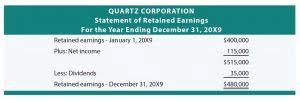Cost Benefit Principle Definition, Example, How it Works?

In other words, an item is valued at the exchange price at the date of acquisition and shown in the financial statements at that value or an amortized portion of it. For accounting purposes, business transactions are normally measured in terms of the actual prices or costs at the Accounts Receivable Outsourcing time the transaction occurs. While the cost principle has served as a reliable method for asset valuation, the future will likely demand more flexible and comprehensive approaches. These will need to account for the multifaceted nature of value in a modern economy, blending traditional methods with new insights and technologies to better capture the true worth of assets. The cost principle may continue to play a role, but it will be part of a broader, more adaptive framework that reflects the realities of a rapidly changing world.
205-39 Service and warranty costs.
However, under accrual accounting, the revenue would be recognized in December when the services were actually provided, providing a more accurate reflection of the company’s performance in that period. The rationale behind the Cost Principle is to ensure objectivity and provide users of financial statements with information that is verifiable and reliable. By recording assets at their original cost, the principle aims to provide a true and accurate representation of the resources owned by an entity at a specific point in time.
- Pam’s will keep the building on its balance sheet for $20,000 until it is either retired or sold.
- While the Cost Principle is essential for reliable financial reporting, its application presents several challenges that accounting professionals must navigate.
- The remaining elements of costs which are regarded as continuing to have future service potential are carried forward in the historical balance sheet and are termed as assets.
- By recording assets at their original purchase price, investors and creditors can evaluate a company’s financial position and profitability with greater accuracy.
- Adjustments may need to be made to the financial statements to reflect the correct amount of expenses capitalized for tax purposes.
- The Cost Principle is a crucial accounting convention that ensures businesses record their assets at the cost incurred during their acquisition.
Intangible Assets Are Not Recorded
Because assets appreciate and depreciate, financial records which follow the cost principle are unlikely to accurately reflect a business’s actual financial position. The principle requires assets to be recorded at their original cost, which is a verifiable and objective measure. This provides users of financial statements with a consistent basis for assessing the value of assets owned by a company. By avoiding subjective estimates or valuations, the Cost Principle enhances the credibility of financial reporting. A company’s balance sheet should reflect all assets, liabilities, and equities at this cost, regardless of how much they have appreciated over time.
- In contrast, fair value accounting aims to reflect the current market value of an asset, offering a more dynamic and potentially more accurate representation of an asset’s worth at any given time.
- The excess of the actuarial value of the assets of a pension plan over the actuarial accrued liability is an actuarial surplus and is treated as a negative unfunded actuarial liability.
- You have proof of the purchase, and no one can tell you that the value is lower than that.
- Labor-time standard means a preestablished measure, expressed in temporal terms, of the quantity of labor.
- (2) May adjust the price to reflect the actual cost of any modifications necessary because of contract requirements.
- Another way the Cost Principle is applied is in determining the cost of goods sold (COGS).
- This transparency helps prevent manipulation or misrepresentation of financial information, contributing to the integrity of financial reporting practices.
It does not require updating from period to period.

Using assets that are acquired without purchase can be a challenge when using the cost principle. The cost would be recorded as the value offered by the dealership for the trade-in, as well as the cash paid on top. It makes asset the cost principle values objective, and it is easier to report on than other methods. GAAP, or the generally accepted accounting principles, consists of 10 different principles.

205-15 Fines, penalties, and mischarging costs.
According to the Cost Principle, the value of an asset on the balance sheet should reflect the actual amount paid to acquire it, including any related costs such as shipping or installation. This means that the market value, replacement cost, or fair value of the asset is not considered when initially recording it. This principle is closely tied to the concept of accrual accounting, which requires revenues and expenses to be recognized when they are earned or incurred, regardless of when the related cash transactions occur. Accrual accounting enables businesses to more accurately reflect their financial performance by matching revenues with the expenses incurred to generate them. As a result, non-cash resources and obligations change in time periods other than those in which money is received or paid. What is bookkeeping Recording these changes is necessary to determine periodic income and to measure financial position.
Effects of the Principle on the Calculation of Taxable Income

Marketable securities are often held, waiting to be sold at the right moment. This allows for an accurate representation of the worth of the company’s assets. When you’re looking to predict cash flow for your business, the amount of money to be made from selling assets is important. Depreciation is the exact opposite of appreciation, and most assets undergo it.
- For instance, during economic downturns, the historical cost principle prevents companies from artificially inflating asset values to present a more favorable financial position.
- Suppose now that Mr. X buys stocks of goods for Rs. 300 with the available cash.
- Others argue that the Cost Principle is still relevant, and that it provides a useful benchmark for measuring a company’s financial performance.
- Some business equipment, like computers, are never worth more than what you paid for it.
- More specifically, the value of a company’s internal intangible assets – regardless of how valuable their intellectual property (IP), copyrights, etc. are – will remain off the balance sheet unless the company is acquired.
205-35 Relocation costs.
This means that the asset amounts recorded on your financial statements will be their actual value, as opposed to their current market value. Despite the emergence of alternative accounting methods, such as fair value accounting and replacement cost accounting, the historical cost principle has remained a fundamental concept in accounting practices. Today, it continues to be used by businesses worldwide and is essential to financial reporting and taxation. Despite its limitations, the historical cost principle remains an essential concept in accounting, as it provides a consistent and objective method of accounting for assets and liabilities. Additionally, it is a widely accepted principle in accounting standards, including Generally Accepted Accounting Principles (GAAP) and International Financial Reporting Standards (IFRS). The cost principle mandates that all financial transactions should be recorded at the cost at which they were incurred.
205-4 Bonding costs.

The increase in the price of the office building signals that the future market value is likely to rise, potentially attracting more people to rent or buy different floors as their office premises. By using historical costs, the accountant’s already difficult task is not further complicated by the need to keep additional records of changing market value. Thus, the cost concept provides greater objectivity and greater feasibility to the financial statements. To illustrate these points, consider the example of a tech company that invests in developing a revolutionary software platform. Under the cost principle, the investment is recorded at the amount paid for the development.
